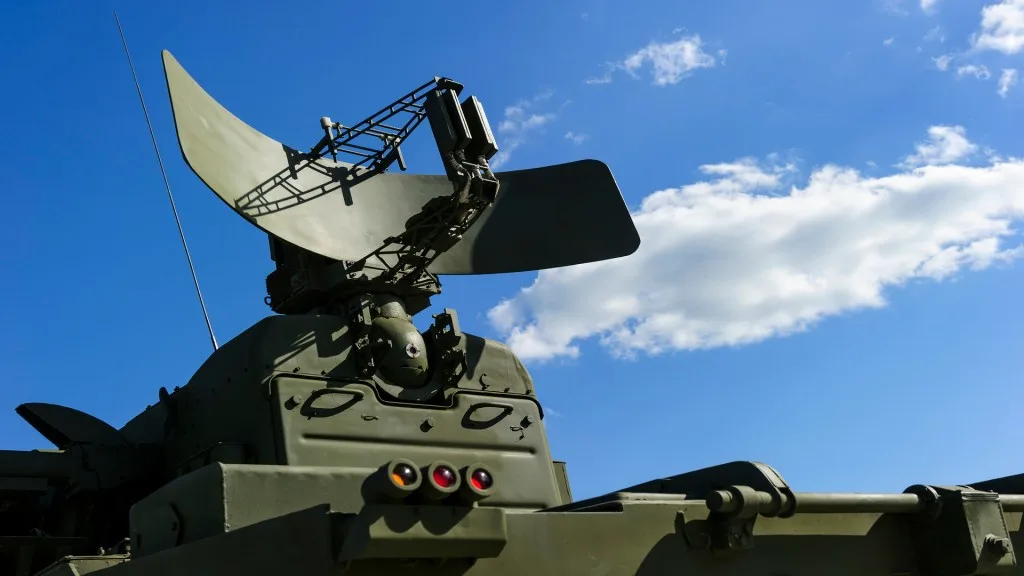In May 2025, the world turned its attention to a bold announcement from U.S. President Donald Trump: the unveiling of the “Golden Dome,” a $175-billion missile defense shield designed to protect the United States from ballistic, hypersonic, and cruise missile threats, particularly from nations like China and Russia. This ambitious project, likened to Israel’s Iron Dome but on a far grander scale, has sparked intense debate, with China expressing “serious concern” over its implications. As a geopolitical analyst with a decade of experience covering U.S.-China relations, I’ve seen tensions like this before, but the Golden Dome feels like a seismic shift in the global security landscape. Let’s unpack why China is so worried, what the Golden Dome entails, and what it means for the world.
What Is the Golden Dome Missile Defense System?
The Golden Dome is a proposed multilayered missile defense system aimed at intercepting missiles at all four stages of an attack: pre-launch, boost phase, midcourse, and terminal phase. Unlike Israel’s Iron Dome, which counters short-range rockets, the Golden Dome is designed to tackle advanced threats like intercontinental ballistic missiles (ICBMs) and hypersonic weapons, potentially launched from anywhere in the world, including space.
- Cost: Estimated at $175 billion, with an initial $25 billion allocated in the 2025 budget.
- Timeline: Trump aims for operational status by 2029.
- Leadership: Space Force General Michael Guetlein oversees the project.
- Components: Includes ground- and space-based sensors, interceptors, and electronic-attack tools.
This system, described by Trump as a “state-of-the-art” shield, has been compared to Ronald Reagan’s Strategic Defense Initiative, often dubbed “Star Wars on steroids.” But for all its promise, it’s China’s reaction that’s stealing the spotlight.
Why Is China “Seriously Concerned”?
China’s Foreign Ministry spokesperson, Mao Ning, didn’t mince words when addressing the Golden Dome, calling it a project with “strong offensive implications” that risks “turning outer space into a battlefield.” This isn’t just diplomatic posturing; it’s a reflection of deep-seated fears about shifting global power dynamics. As someone who’s tracked China’s military modernization for years, I can tell you Beijing’s concerns are rooted in both strategic and symbolic issues.
Threat to Strategic Balance
China views the Golden Dome as a direct challenge to the principle of Mutually Assured Destruction (MAD), the Cold War-era doctrine that has kept nuclear powers in check. By potentially neutralizing China’s nuclear arsenal, the U.S. could gain a strategic edge, allowing it to act more aggressively without fear of retaliation.
- Impact on MAD: A robust U.S. missile shield could render China’s limited nuclear deterrent less effective, upsetting the delicate balance of power.
- Arms Race Fears: Beijing worries this will force them to accelerate their own missile and space-based weapons programs, escalating global tensions.
Mao Ning emphasized that the U.S. is “obsessed with seeking absolute security for itself,” a stance China sees as violating the principle of “undiminished security for all.” In simpler terms, China fears a world where the U.S. can act with impunity while others scramble to keep up.
Militarization of Space
The Golden Dome’s reliance on space-based interceptors and sensors has China crying foul, accusing the U.S. of violating the Outer Space Treaty, which promotes the peaceful use of space. Beijing argues that deploying weapons in orbit could turn space into a “war zone,” a concern echoed by Russia and North Korea.
- Orbital Interceptors: The system’s space-based components are seen as a step toward weaponizing space.
- Global Arms Race: China warns that this could trigger a domino effect, with nations racing to develop counter-space technologies.
I recall a conference in Beijing where a Chinese strategist likened space to the Wild West—once one nation stakes a claim, others rush in, guns blazing. The Golden Dome, in China’s eyes, is the U.S. planting its flag.
The U.S. Perspective: Why Build the Golden Dome?
To understand China’s concerns, we need to see the other side of the coin. The U.S. justifies the Golden Dome as a necessary response to growing missile threats from adversaries. A 2022 Missile Defense Review highlighted China’s rapid advancements in ballistic and hypersonic missile technology, noting that Beijing now boasts the “world’s leading hypersonic missile arsenal” with over 600 nuclear warheads and 400 ICBMs.
- Defense, Not Offense: U.S. officials, including Defense Secretary Pete Hegseth, argue the system is purely defensive, designed to protect the homeland from attack.
- Technological Edge: The Pentagon sees the Golden Dome as a way to counter China’s and Russia’s increasingly sophisticated missile capabilities.
I once spoke with a retired U.S. general who compared missile defense to a seatbelt: “You hope you never need it, but you’re glad it’s there.” For the U.S., the Golden Dome is that seatbelt, but China sees it as a sword.
China’s Response: Strategic and Rhetorical
China’s reaction to the Golden Dome has been multifaceted, blending diplomatic protests with strategic posturing. Beijing has urged the U.S. to abandon the project and focus on “strategic mutual trust,” but behind the scenes, it’s likely recalibrating its own military strategy.
Diplomatic Pushback
Mao Ning’s statements are just the tip of the iceberg. China has joined forces with Russia, issuing a joint statement in May 2025 condemning the Golden Dome as “deeply destabilizing.” North Korea has also chimed in, calling it an “outer space nuclear war scenario.” This trio’s unified front signals a broader geopolitical alignment against U.S. ambitions.
- Global Advocacy: China is rallying support from nations wary of U.S. military dominance, framing the Golden Dome as a threat to global stability.
- Treaty Violations: Beijing repeatedly cites the Outer Space Treaty to paint the U.S. as a rogue actor.
Strategic Countermeasures
China isn’t just talking; it’s acting. Experts like John S. Van Oudenaren from BluePath Labs note that Beijing is likely to accelerate its own space-based weapons programs in response. China’s already formidable arsenal, including anti-satellite weapons and hypersonic missiles, could see significant upgrades.
- Hypersonic Advancements: China may prioritize missiles designed to evade the Golden Dome’s interceptors.
- Space-Based Capabilities: Beijing could double down on its own orbital weapons to counter U.S. satellites.
I remember a late-night discussion with a colleague in Shanghai who quipped, “If the U.S. builds a dome, China will build a bigger spear.” It’s a race neither side can truly win without destabilizing the other.
The Global Implications: A New Cold War?
The Golden Dome isn’t just a U.S.-China issue; it’s a global one. The project’s $175 billion price tag—potentially ballooning to $542 billion over 20 years—raises questions about its feasibility and impact on international relations. Critics argue it could spark a new Cold War, with space as the new frontier.
Comparison: Golden Dome vs. Iron Dome
| Feature | Golden Dome | Iron Dome |
|---|---|---|
| Purpose | Counter ICBMs, hypersonic, cruise missiles | Counter short-range rockets, artillery |
| Scope | Global, multi-domain (space, ground) | Regional (Israel) |
| Cost | $175B–$542B | ~$1.5B annually |
| Timeline | Target operational by 2029 | Operational since 2011 |
| Threats Targeted | Advanced missiles from China, Russia | Rockets from Gaza, Lebanon |
The Golden Dome’s scale dwarfs the Iron Dome, but so do its challenges. Israel’s system protects a small area against less sophisticated threats, while the U.S. aims to shield a vast nation from cutting-edge weaponry. As a friend in the defense industry put it, “It’s like comparing a bulletproof vest to a fortress.”
Pros and Cons of the Golden Dome
Pros:
- Enhances U.S. homeland security against missile threats.
- Leverages advanced space technology for defense innovation.
- Signals U.S. commitment to countering China and Russia.
Cons:
- Risks escalating global arms race and space militarization.
- High costs may strain U.S. defense budget.
- Technical feasibility remains uncertain, with past systems like Reagan’s Star Wars falling short.
People Also Ask (PAA)
Based on Google’s common queries, here’s what people are asking about the Golden Dome:
- What is the U.S. Golden Dome missile defense system?
It’s a proposed $175-billion shield to protect the U.S. from ballistic, hypersonic, and cruise missiles, using ground- and space-based technologies. - Why is China concerned about the Golden Dome?
China fears it undermines its nuclear deterrent, violates the Outer Space Treaty, and risks turning space into a battlefield. - How much will the Golden Dome cost?
Estimates range from $175 billion to $542 billion over 20 years, with an initial $25 billion proposed for 2025. - Where can I learn more about the Golden Dome?
Check official U.S. government sources like the Department of Defense website or reputable news outlets like Reuters and CBS News for updates.
The Bigger Picture: Trust and Tensions
As someone who’s spent years studying U.S.-China dynamics, I can’t help but feel a pang of unease. The Golden Dome isn’t just about missiles; it’s about trust—or the lack thereof. China sees it as a power grab, while the U.S. sees it as a shield against aggression. Both sides have valid points, but the path forward feels like walking a tightrope over a volcano.
I once met a Chinese diplomat who shared a proverb: “When two tigers fight, the forest suffers.” The Golden Dome could be the spark that sets the forest ablaze, pushing the world toward a new era of confrontation. Or it could be the shield that keeps the peace. Only time will tell.
Where to Get More Information
For those eager to dive deeper, here are some reliable sources:
- Department of Defense: Official updates on the Golden Dome project.
- Reuters: Detailed reporting on global reactions.
- Air & Space Forces Magazine: Insights into the strategic implications.
Best Tools for Staying Informed
To keep up with developments, consider these tools:
- Google News: Aggregates updates from trusted sources.
- Defense News App: Real-time military news.
- X Platform: Follow accounts like @WashTimes for real-time sentiment.
FAQ: Addressing Common Questions
Q: Is the Golden Dome the same as Reagan’s Star Wars program?
A: While inspired by Reagan’s Strategic Defense Initiative, the Golden Dome is more advanced, focusing on space-based interceptors and modern missile threats. It’s often called “Star Wars on steroids.”
Q: Will the Golden Dome actually work?
A: Experts are skeptical due to technical challenges and high costs. Past U.S. missile defense systems have had mixed success, with a 50–55% test success rate.
Q: How does China plan to respond?
A: China may accelerate its hypersonic missile and space-based weapons programs while rallying international support against the project.
Q: Can the Golden Dome prevent a nuclear war?
A: It aims to protect against missile attacks, but critics argue it could destabilize global security, potentially increasing the risk of conflict.
Q: Where can I track Golden Dome developments?
A: Follow the U.S. Space Force, Department of Defense, and reputable news outlets like CBS News and Newsweek for updates.
Final Thoughts
The Golden Dome is more than a defense project; it’s a flashpoint in the U.S.-China rivalry. China’s “serious concern” reflects fears of losing strategic leverage, while the U.S. sees it as a necessary step to counter growing threats. As tensions simmer, the world watches, wondering if this dome will protect or provoke. For now, it’s a high-stakes gamble in a game where no one truly wins.






